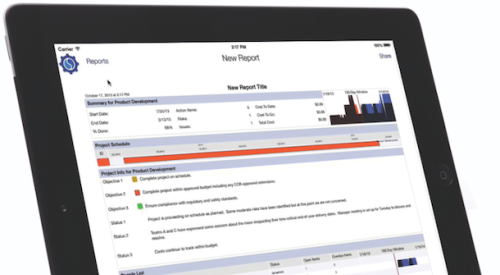| Noelle Tarabulski
|
You start your day relaxedùnot many worries. The reason: You have successfully navigated the challenge of using the Internet to simplify the management of your home building company.
With Internet technology now fully in place, your day is completely planned. All the information you need is available at the touch of a key (or the pointer on your hand-held device). Reporting is clear and conciseùexactly the analysis you need. Material orders arrive just-in-time. Vendors let you know of any delivery glitches with enough advance notice that you can act to limit the impact. You are confident that you receive the best prices because you can check them versus others on the Internet. Job-scheduling is flawless. The equipment in your office is all Internet-capable, complete with a high-speed connection. And best of all... you now feel less essential to the whole process.
Just as you think to yourself, æI should have done this sooner,Æ you fall out the chair. You were dreaming.
Has the potential of Internet technology got you day dreaming? Join the club. But as senior editor Bill Lurz and The Meyers GroupÆs David Thikoll point out in their must-read article ôE-dreams, E-Realitiesö in last monthÆs PBùthere is plenty of room for confusion out there as well. WhatÆs a builder to do with all this talk and theory about web technologyùthe new, new thing (whatever it is this week)ùamidst the challenge of making money the old fashion way (earning it with good processes and procedures). I want to look at the Internet issue from strictly a systems-based standpoint.
Think of the Internet as a vehicle that allows you to communicate more efficiently with the people and the organizations you work with. Think of it as a tool that allows you to do something once and automatically spread the news quickly. DonÆt think of it as a way to improve the quality of your information. Poor content is still poor content, however timely it may be. In the future of widespread Internet use in home building, core processes important to your business will be largely unchanged. What will change is the number of alternatives available to manage them.
Boiled down to the basics, home builders do five basic things: Market and sell homes; purchase and estimate; supervise construction; perform closings, and execute warranties. More timely, accurate reports will be a real benefit to managers as information flows seamlessly between, the field, home office and vendors. What value is a report 12 weeks after you closed on a house indicating that you lost three percent on it?
It is with inefficiencies like this in mind that the myriad of Internet development firms aim to provide huge cost savings to home builders. And this may eventually be true. The question is where will these gains come fromùincreased technological efficiency or the improvement of back-office processes? The answer is both. Internet-based applications will ease the flow of information across all communication platforms and applications, but not without organizational improvement first. So the best place to begin your analysis of company-wide Internet computing readiness is to ask yourself the following questions:
A World Wide Area Network
How, specifically, will the Internet improve on a good existing internal network? LetÆs begin with some basics.
A local network depends exclusively on the hardware and software that exists within your office. It allows people within the firm to save files in one location, to send e-mail and work on their local workstation and on the server or servers. The next step up in the food chain is a Virtual Private Network, or VPN. It extends local capabilities well beyond the walls of your building, allowing users to access data and software from anywhere. You can access this type of network with a dial-in connection, or through the Internet, saving on direct-dial costs.
The primary benefit of a VPN is its ability to allow companies to take advantage of sophisticated and specialized computing applications that are not locally based. These Internet-based applications are delivered by a growing number of firms called Application Service Providers or ASPs. One caveat is that working with ASPs necessitates tight security on your end.
Currently, most new desktop software is written to enable seamless transitions from the back-office to the Internet. Internal code written to create commonly used word processing, spreadsheet and database software now enables them to be used both in an Internet environment and a local network environment. It is critical that you understand the capabilities of your current software in this regard.
This is a new and developing area and in the coming months and years, you will need to make some key technology decisions. If you upgrade your systems to be current with the latest technology, your ability to adapt your software applications and data to a VPN or Internet-based technology can be quite easy.
The effective use of technology really means the leveraging of one source of information so it can be effectively managed, viewed, or acted upon by others.
Potential benefits include:
In turn, ASPs will reduce one-time technology charges, limit software defects; minimize the learning curve for the effective use of software; and improve the ability to ôdata mine,ö or organize information in formats that provide for effective and timely decision making.
Be sure to remember that expanding your network is only an improvement if you are ready for the change. And know that before you start dreaming of vast Internet-enabled efficiencies, plenty of groundwork is first required.
Also See:
The Benefits of Internet-Enabled Software












